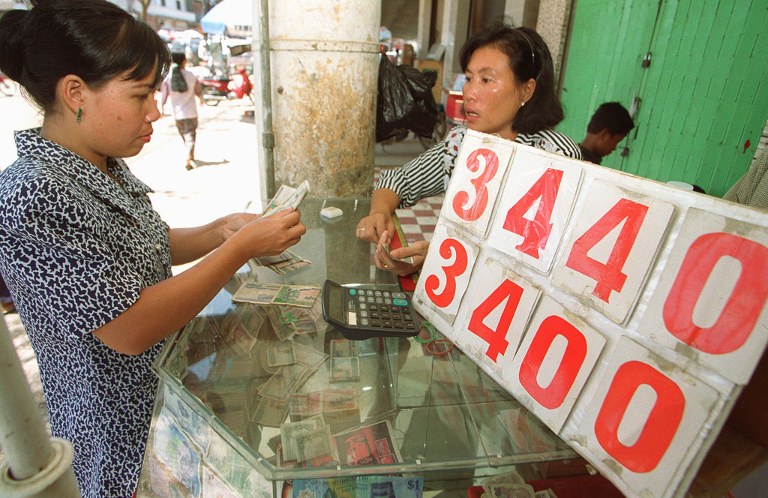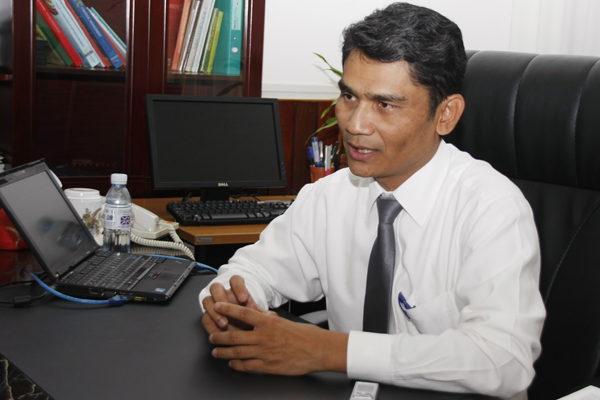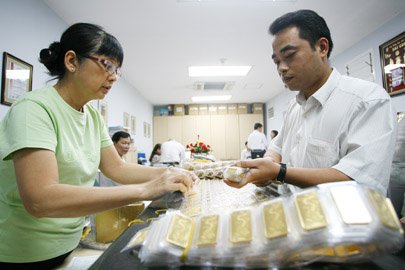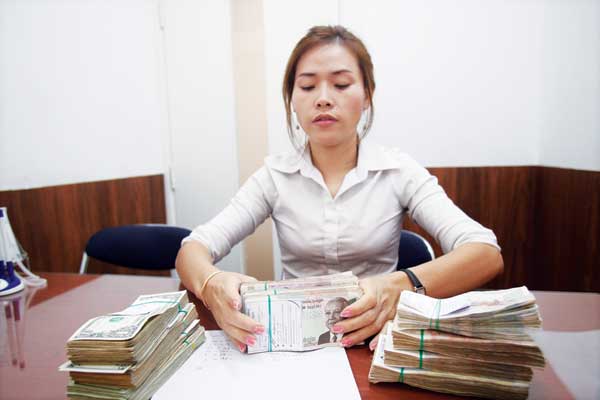Looking back at riel history
Looking back at riel history
For the past decade, Cambodia’s economy has steadily grown with GDP growth surpassing 5% on a compounded annual basis for the past twelve years.

Even with this level of success, the economy remains primarily agrarian. Nearly 58% of the populace is engaged in agriculture, while the service sector employs 26% and industry accounts for the remaining 16%.
As peace returned in 1999 and civil violence became a thing of the past, tourism grew rapidly, along with expansion in the garment industry. Although accounting for only 5% of the jobs, the garment industry produces 70% of the nation’s exports.
Amid this success, however, the country still does not have a stable and dependable monetary system.
The Cambodian Riel (“KHR”) is the official currency of the nation, but its use as legal tender is not uniform across the country.
Although accepted and used in a variety of denominations, it still competes on a local level with the U.S. Dollar.
The United States Dollar, still prevalent in circulation after many years, is often considered as Cambodia’s unofficial second currency.
The riel has a checkered past, but it has been reissued from time to time on at least twelve occasions.
Western countries did not explore its jungle until late in the nineteenth century, but when French colonialism took hold in Indochina, the “piaster” became the local currency, equivalent on par with more common Spanish “pieces of eight” and Mexican Pesos.
The first riel actually appeared in 1953, issued at par with the existing piaster, as the French tried to appeal to local demands for regional currencies in Cambodia, Laos, and Vietnam.
The riel was initially subdivided into 100 centimes, abbreviated to “cent.” on the coins, but this was modified to 100 “sen” in 1959.
During the Khmer Rouge regime from 1975 to 1979, new banknotes were printed, but never issued.
As government institutions broke down, no visible monetary system existed until a new riel was introduced in 1980 during the Vietnamese occupation.
In many cases the government actually gave away the currency to the populace in rural areas because there was no prior currency to replace.
When peacekeeping forces from the United Nations arrived, they decided to inject a large quantity of U.S. Dollars as stimulus for the local economy in 1993.
Today, the greenback is still dominant, with riel often used to make fractional payments for dollars since no U.S. coinage had ever been introduced.
The existence of a “dual currency” system in an emerging economy that is in a rebuilding phase is not uncommon on the global stage.
Similar arrangements have had histories in Latin America, Cuba, Africa, and even China. The IMF refers to these dual currency regimes as “dollarisation”.
Measuring the degree of “dollarisation” from actual money in circulation is difficult to achieve, but estimates of foreign currency deposits versus local currency can be made.
In Cambodia, U.S. Dollars account for 80% of this broad money measure.
Dollarisation is a common phenomenon. Some reports put the figure as high as 90 countries where these policies are employed for market development reasons.
Dispensing with this dual arrangement can be costly and difficult, but possible when fiscal and monetary policies gain credibility over time.
phnom penh post
















